| Designation: | M109A6 Paladin |
 |
|---|---|---|
| Manufacturer: | BAE Systems Land and Armament | |
| Product type: | Armoured Vehicles | |
| Name: | Self-propelled howitzer |
The M109A6 Paladin is the latest advancement in 155mm self-propelled artillery. The system enhances previous versions of the M109 by implementing onboard navigational and automatic fire control systems. Paladin has both a Kevlar-lined chassis and a pressurized crew compartment to guard against ballistic, nuclear, biological, and chemical threats.
The Paladin M109A6 howitzer is the fourth product improvement to the original M109 self-propelled (SP) howitzer. It features improvements in the areas of survivability; reliability, availability, and maintainability (RAM); responsiveness; and terminal effects. The M109A6 is an armored, full tracked howitzer carrying 37 complete conventional rounds and two Copperhead projectiles. It is operated by a crew of four. It is designed with a new turret structure that facilitates integration of the various turret improvements and vulnerability reduction measures. It improves overall crew compartment layout and space. The howitzer can travel at a maximum speed of 38 miles per hour and has a maximum cruising range of 186 miles.
The M109A6 is the most technologically advanced cannon in the Army inventory. This weapon has a 4 man crew, and weights approximately 62,000 lbs/32 tons, and has a cruising range of 186 miles, Max speed is 35 MPH, It has a fuel capacity of 133 gals. The Paladin can operate independently, from on the move, it can receive a fire mission, compute firing data, select and take up its firing position, automatically unlock and point its cannon, fire and move out - all with no external technical assistance. Firing the first round from the move in under 60 seconds, a "shoot and scoot" capability protects the crew from counterbattery fire. The M109A6 Paladin is capable of firing up to four rounds per minute to ranges of 30 kilometers. The Paladin features increased survivability characteristics such as day/night operability, NBC protection with climate control and secure voice and digital communications. The crew remains in the vehicle throughout the mission.
The Paladin is designed to accept new technologies increasing firing range, rate of fire, and accuracy. TACOM-ARDEC, in order to maintain the state-of-the-art in artillery technologies, is continuing to develop enhancements adaptable to Paladin, such as a 52 caliber gun, Modular Artillery Charge System (MACS), and a laser ignition system.
The Paladin is an example of equipment bridging the gap between current systems and those planned for the future. It dramatically increases the responsiveness, survivability and flexibility of self-propelled cannon artillery. Adding advanced technology to a 1950s chassis, the Paladin begins a revolution in the way the field artillery fights. Using computers, the Paladin can determine its own position on the ground and compute its own firing data. Single-channel ground-air radios permit voice and digital communication with the platoon's operation center and with other howitzers in the platoon.
The most significant operational differences between the M109A6 howitzer and prior M109 series howitzers are the Paladin's ability to operate over a widely dispersed area and to move and emplace using the Paladin technology. The Paladin can move and position within an assigned position area, process technical firing data, and fire a mission without relying on aiming circles and wire lines. Target acquisition and engagement parameters (tactical fire control) are provided by the Paladin platoon's battle command facility, the platoon operations center (POC). The automatic fire control system (AFCS) and single-channel ground and airborne radio system (SINCGARS) frequency modulation (FM) radios change the current requirements for surveyed firing points, aiming circles, and land lines.
In the past, communications wire had to be manually strung between the vehicles and the fire-control center. Without the need for wire communications, the Paladin can change position more frequently, an advantage against enemy fire. Such advancements give new meaning to the artillery's ability to move, shoot and communicate. The Paladin's technology reduces the time soldiers are vulnerable to enemy fire. Every time you fire a round, the enemy can zero in on your position and fire back. If you take too long to get out of there, you're probably going to get killed.
In the past, it would take about 20 minutes to prepare a firing position and another 15 to 20 to displace. It was very manpower-intensive to emplace the battery before. A five-man crew served each of the six howitzers in the battery. Surveyers calculated the battery's location, and crew members ran communicaitons wire by hand. The gun sections each had a guy who would run the wire to the fire-direction center, and when it was time to displace, he would have to go down to the fire-direction center, unhook the wire and roll it up. It didn't take soldiers long to figure out that that's not a good way to do business if you want to stay alive.
New technology allows cutting that wire link from the fire direction center, which limited how far one could disperse the howitzers on the battlefield.
Technology also increases speed. The Paladin's top speed of 38 mph makes it slightly faster than the M-109A3. The Army beefed up the engine and transmission, and installed some new technologies -- an on-board fire control system, on-board position-navigation system, radios. There is also improved ballistic protection on the howitzer and on-board prognostics and diagnostics to help diagnose when there is a problem.
The Paladin/FAASV program entails a major product improvement and re-engineering effort - begun in 1979 - to upgrade the U.S. Army's primary self-propelled long-range howitzer, designated the M109 series. Range, lethality, reliability, speed and mobility were all limitations of this 1950's design, as was the lack of onboard navigation/location and nuclear, biological and chemical protection for the crew. The new Paladin closes the technology gap in response to the requirements of the U.S. Army Soldier. These "shoot and scoot" requirements, were translated into engineering requirements and specifications that updated or replaced every subsystem of the vehicle.
The first 164 Army Paladin systems were manufactured under a September 1991 LRIP contract, resulting in FUE status in April 1993. The subsequent full-scale production (FSP), multiyear contract covered 630 howitzers. Additional options for 83 systems and a follow-on order for 73 Paladins brought the total number of units produced under FSP to 786. Production of 950 Paladin vehicles and 927 FAASV vehicles has been completed. June 25th, 1999 marked the end of Paladin's Full Rate Production. By the end of 2001, the Army provided 950 (164 LRIP + 786 FSP = 950 M109A6s) defect-free Paladins and 927 defect-free FAASVs. The Army received a FY 2000 congressional plus-up for an additional 7 Paladin vehicles for continued Army National Guard modernization, with deliveries scheduled for January 2002. It is believed that Army National Guard planners may seek funding for additional M109A6 upgrades in the coming fiscal years.
The Paladin was delivered into the capable hands of US Army and National Guard Field Artillery units in accordance with a detailed schedule that included advance Materiel Fielding Team customer familiarization, new equipment training for both officers and enlisted personnel, and all of the associated logistics, spares, manuals, trainers and testing devices for the weapons system.
In the beginning, there was a typical weapon system procurement program for the development and low rate production of the M109A6 howitzer. It was known as the Howitzer Improvement Program (HIP). There were the usual schedule slips, cost overruns, and high levels of animosity and friction among stakeholders with litigation eminent as the ultimate Sword of Damocles. In the end, there was the Paladin Production Enterprise, an enterprise that delivered every howitzer ahead of schedule, under budgeted cost, and without any meaningful discrepancies for quality or material shortage.
The Program's development phase endured downward budget adjustments and cost and schedule concerns that mandated a competitive strategy be implemented for subsequent production activity. A series of competition and acquisition strategy analyses were conducted to determine the best way to accomplish a competitive production program. Several factors caused Paladin production to be perceived as unattractive to potential competitive bidders. The incumbent development contractor enjoyed an obvious, significant advantage in terms of program experience and technical understanding of the system. Additionally, evolutionary downsizing of the program from an initial production quantity of 1700 to 824 units decreased the potential return on investment. The production strategy that emerged from these negotiations placed the low-rate initial production contract with the developer, while concurrently examining all viable competitive options for full-scale production (FSP).
Army leaders contributed to the development of a competition strategy to "level-the-field" among potential bidders. This strategy was dubbed "Producibility Evaluation Task" (PET). A market survey, in the form of an Industry Day, was held to familiarize industry with the Paladin program and provide information on the PET effort. It was explained that the PET acquisition was being issued to enhance competition for FSP. With PET, potential contractors could be paid to learn first-hand about the Paladin system, study the Technical Data Package (TDP), and prepare a manufacturing plan and proposal for the full scale protection (FSP) acquisition. The PEO Field Artillery Systems, procurement officials, and legal advisors supported the Product Manager's position to encourage potential competitors to consider an innovative, streamlined approach in their FSP proposals. Letterkenny Army Depot (LEAD) officials further encouraged innovative approaches by describing how their organic production capability related to the self-propelled howitzers might be combined with industry's capability.
The PET effort resulted in competitive FSP proposals from three sources: the incumbent, BMY Combat Systems; FMC, Ground Systems Division; and General Dynamics, Land Systems Division. During PET, all sources discussed the use of Government facilities with LEAD. These discussions, obviously competition sensitive, were carefully managed and scrupulously documented by LEAD officials. LEAD's intent was to be completely responsive and cooperative, while remaining passive to any suggestion of strategy or partnering concepts. Similar protective measures were implemented at the Product Managers Office (PMO); the number of personnel involved was minimized and each was briefed on the sensitivity of discussions and documentation provided by the contractors. Some contractor requests to LEAD were declined due to the illegality of binding fixed price agreements and selling production services directly to the contractors.
Best value selection procedures and criteria were implemented through the FSP solicitation's instructions and Source Selection Plan. The FMC Ground Systems Division proposal was judged best value, and FMC was awarded the $334 million, multi-year, FSP contract. FMC's approach included creating the Paladin Production Division (PPD) as an independent business unit— a collocated production facility at LEAD. (Shortly afterward FMC and BMY formed a partnership to be known as United Defense). PPD proposed to use existing LEAD capability for chassis overhaul and conversion, armament testing, completed vehicle break-in, and performance testing. This strategy evolved from PPD's analysis of the business risks associated with the Paladin Production Program. They accurately perceived the value of a low cost business environment and the benefit of avoiding duplication of the existing production infrastructure at LEAD. PPD planned to procure the new turret and then perform all system integration activity at LEAD facilities on a "nominal fee" basis. Additionally, FMC planned to renovate and upgrade Building #56 (at their expense) and procure facilities' support services from LEAD (utilities, snow removal, rail service, etc.). In the end, $46 million in savings was attributable to the competitive multi-year acquisition strategy adopted by the PEO/PMO Officials.
The Letterkenny Army Depot is a key partner with the Defense Depot Letterkenny, PA (DDLP) in ensuring availability of the 1900 necessary parts to the production line. Letterkenny Army Depot's partnership role is to deprocess old howitzers, salvage reusable chassis and components and integrate all chassis/automotive upgrades into the refurbished Paladin chassis. United Defense Limited Partnership Paladin Production Division, also collocated at Letterkenny Army Depot forms part of the production line, applying its skills in systems and turret integration after receiving the Paladin chassis from Letterkenny. The Defense Contract Management (DCM) partner is the designated Department of Defense in-plant organization to ensure both product quality and fiscal integrity of the defense contractor, United Defense Limited Partnership. Major suppliers include Honeywell (navigation/positioning systems), Detroit Diesel (new low heat rejection engines), United Defense - Ground Systems Division (turret manufacturer), Watervliet Arsenal (cannons and ballistic shielding) and Alliant Tech Systems (Automatic Fire Control System).
|
||||||||
|
|||||||||||||||
|
||||||||||||
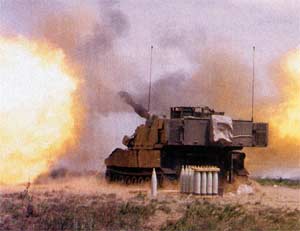 |
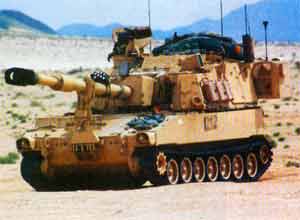 |
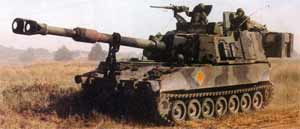 |
 |
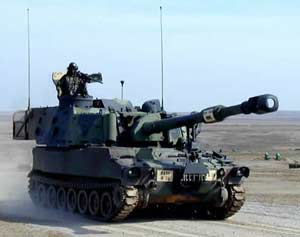 |
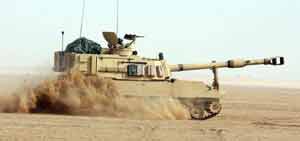 |
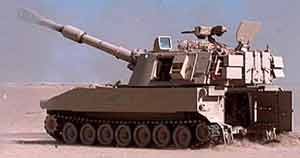 |
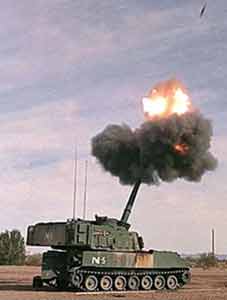 |
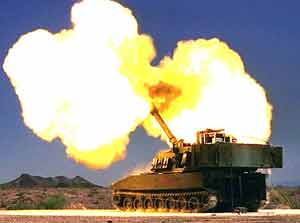 |
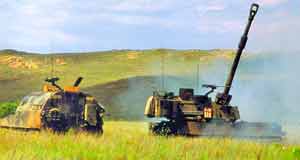 |
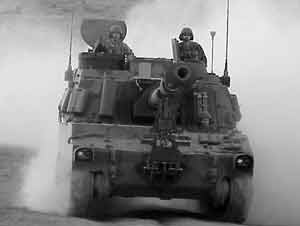 |
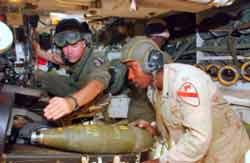 |
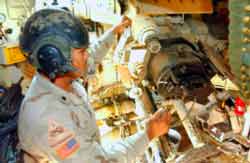 |
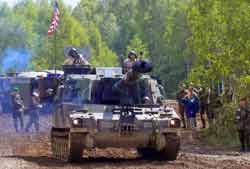 |
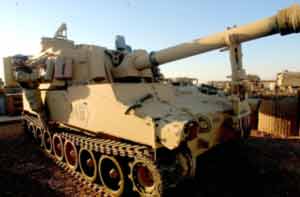 |
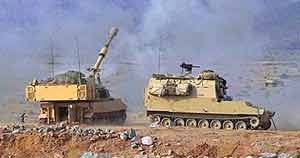 |
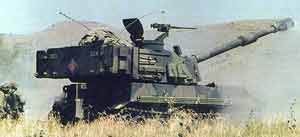 |
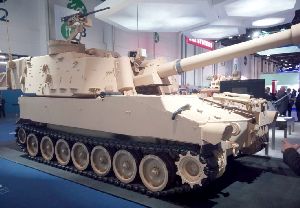 |
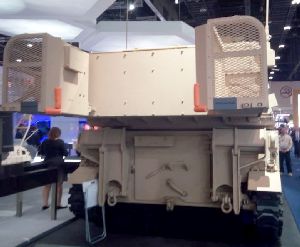 |
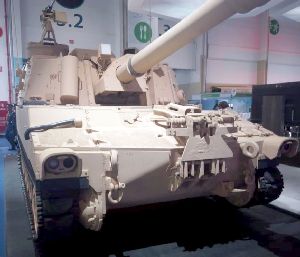 |

